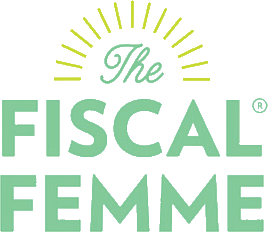What You Need to Know About Credit Cards
I have a love/hate relationship with credit cards. Some use them as a tool to pay for vacations with points. For others, having the ability to use a credit card to bridge the gap when cash isn’t available is a lifeline (albeit an expensive one) because there aren’t better options available – and nearly one in four people in the United States can’t get approved for a credit card.
When we do get a credit card, it doesn’t come with a manual or even any directions. And considering they can change the financial trajectory of our lives for the worse (or much worse), that’s a big problem.
Understanding how credit cards work can help us make informed decisions. You know . . . knowledge is power and all that.
What are credit cards?
A credit card is a revolving loan from a bank or other institution. You an use the card to pay for things, pay the balance down, and build up the balance again. It’s up to you. And that’s why it’s called a revolving loan.
The loan comes with a plastic card (or other material) that allows you to make purchases. You are given a certain credit limit, which is the maximum you are able to borrow (or put on the card) at any given point in time.
How credit cards work
MINIMUM PAYMENT.
Each month you’ll have a required payment on your credit card (a.k.a. a minimum payment). This is different from your credit card balance or the total amount you owe at any given point in time.
That bears repeating. Your minimum payment is not the total amount you owe. It’s much less.
Each credit card company calculates its minimum payment differently, but it’s often 1–3% of your balance. That’s why it’s not uncommon for your balance to increase over time when you make minimum payments, even if you’re not spending on the card. Woof. I know.
INTEREST RATE.
The interest rate (also called APR or annual percentage rate), which is the amount we pay to compensate the credit card company for lending us the money. The average credit card interest rate is 14.5%, but for some reason most credit cards I see have interest rates upwards of 20–25%.
The APR is applied to the balance that is not paid off at the end of the month (or cycle). For example, if your balance is $1,000 and you make a $30 minimum payment, you’ll pay interest on the remaining $970. For an APR of 20%, that’s a 20% interest rate per year, but you are charged interest monthly (20% divided by 12) as part of your monthly bill, which comes to about $16 in interest.
If you continue to make payments of $30 per month, it would take you 50 months (over four years) to pay down the credit card and you will have paid $471 in interest or 47.1% more than the original $1,000 balance.
To find the exact amount, there is typically a line item on your credit card statement titled “interest charges” or something similar.
If you like to get things on sale (who doesn’t?), keeping a balance on your credit card is the opposite. You’re paying more for something than it costs. And just like compound interest works wonders for our investments, it works against us with our credit card debt. Most credit card companies compound interest daily, meaning the balance used to calculate your interest goes up each day – interest on interest.
The first step to paying down credit card debt
If you have credit card debt and are looking for the first step to paying it down, start here.


